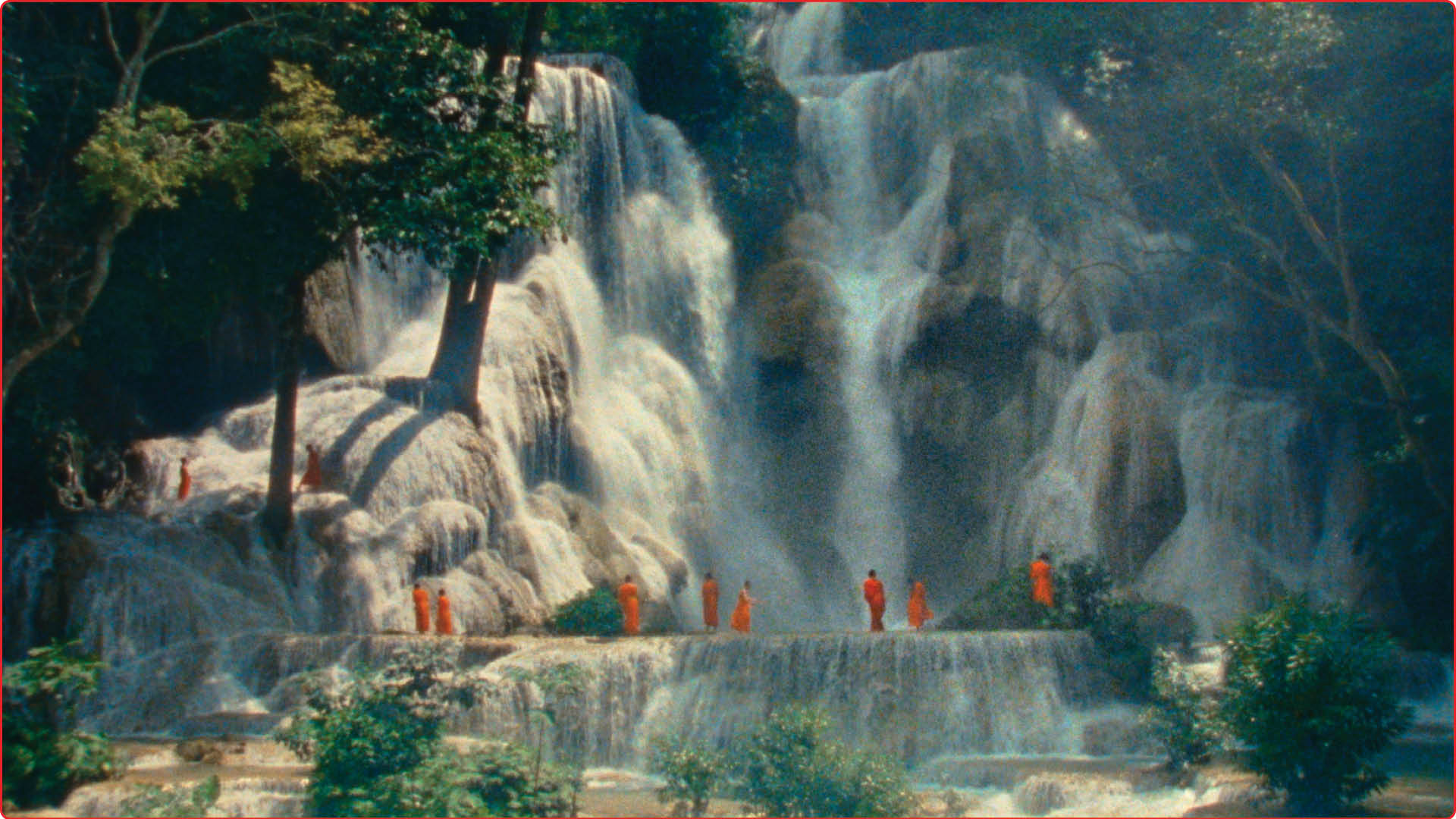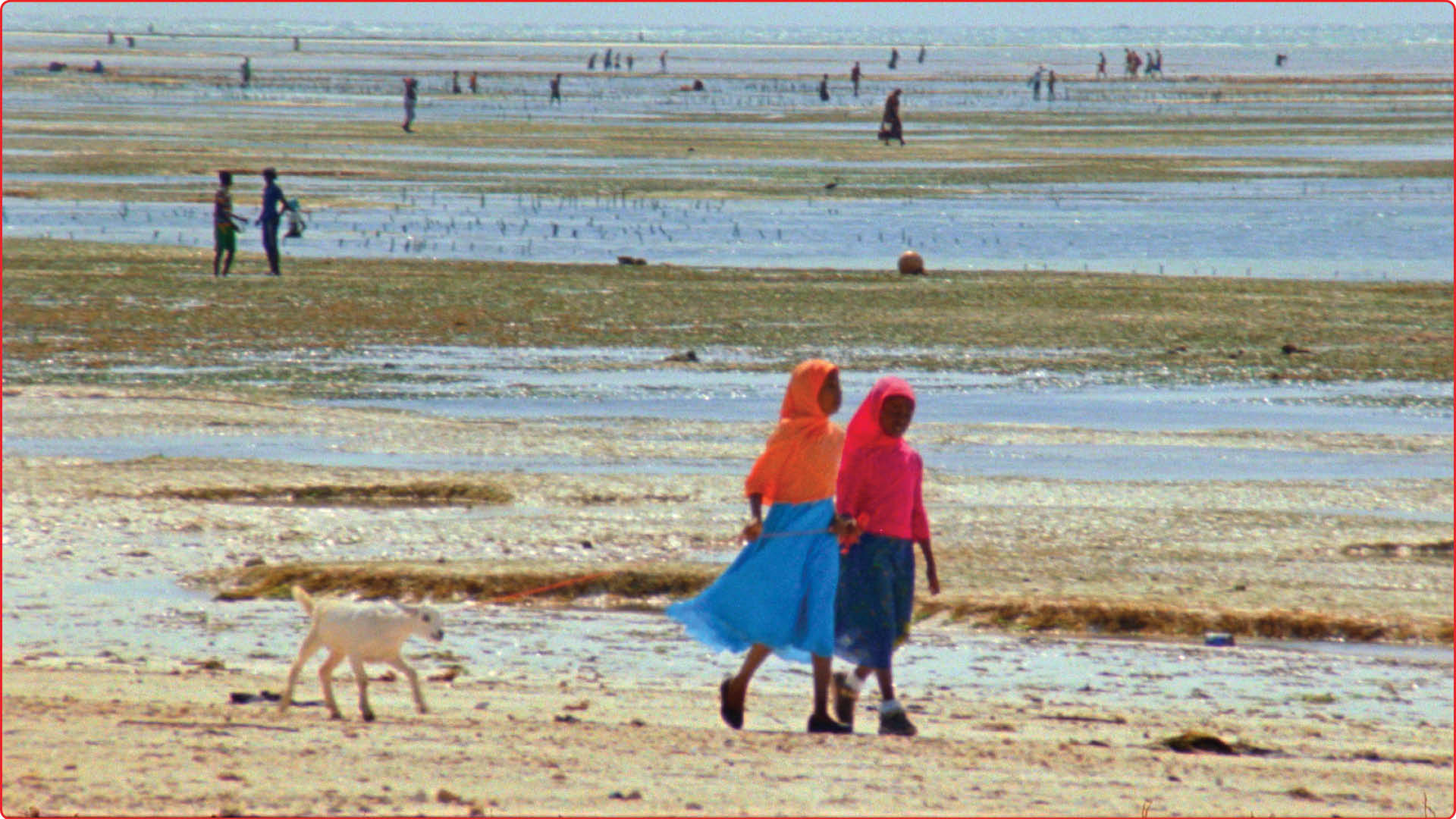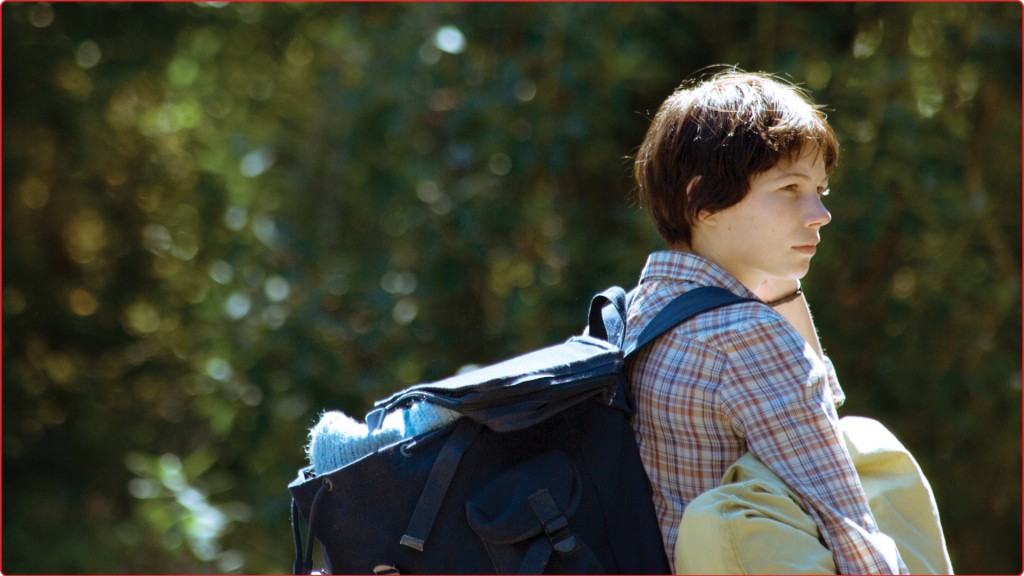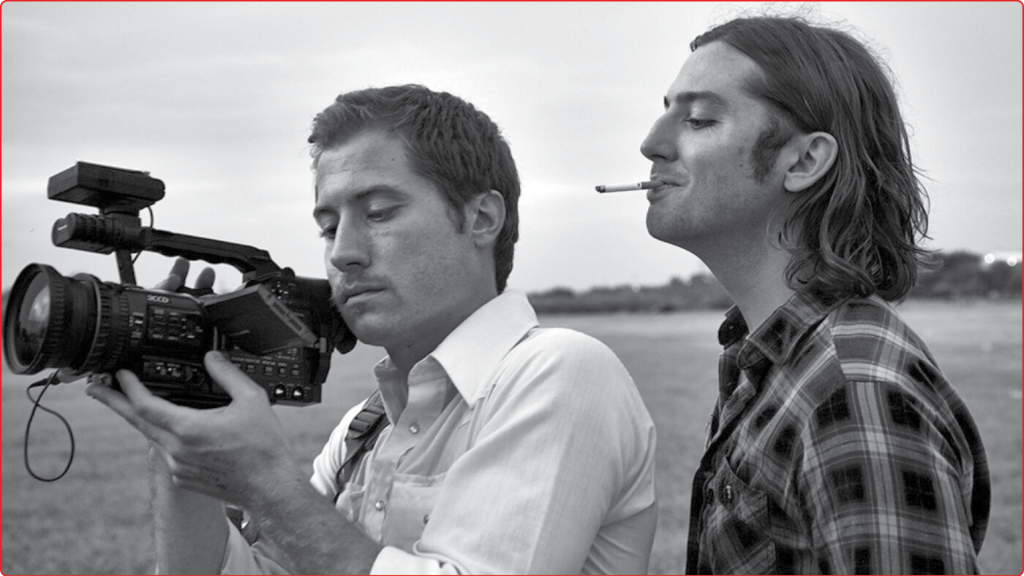LOIS PATIÑO WHO CAN RECALL HIS PAST LIVES
Samsara, the third feature by Lois Patiño, is a shapeshifting film in every sense. Part documentary, part fiction, part expanded cinema experience, it’s a work that draws on all aspects of the 41-year-old Galician filmmaker’s prior output while simultaneously pushing him into uncharted territory. Long established in artists circles, Patiño is currently among the few directors applying experimental filmmaking techniques to narrative cinema.
His latest is set largely in two locations, Laos and Zanzibar, with a third, intermediate space serving as a bridge between these settings. In the first, a young man (Amid Keomany) tends to an ailing old woman (Simone Milavanh) and reads to her from The Tibetan Book of the Dead. She hopes to be reincarnated—perhaps as an animal. “How beautiful it would be to have a new body,” she says. Like an Apichatpong film, this section, which was shot by Spanish cinematographer Mauro Herce, is mystical and methodically paced, tracing the boy’s steps through the verdant landscape as he cares for the woman and seeks advice from a group of Buddhist monks. When the woman dies, the film truly comes alive, calling on the spectator to do something seemingly antithetical to the viewing experience: close their eyes. From here, a kind of interactive trip commences as colored light, flicker effects, and field recordings are made to conjure mental images of the woman’s soul passing through the bardo—15 minutes of pure cinema that brings the synaesthetic stylings of Tony Conrad and Paul Sharits to bear on the narrative form.
The film’s final section takes us to the beaches of Zanzibar, where scenes of a little girl playing with a baby goat usher in an extended sequence centered on a community of Muslim women who gather seaweed from the ocean to grind into soap, a process captured by this segment’s cinematographer, Jessica Sarah Rinland, in the kind of intimate, observational style familiar from her own work in the field of ethnographic nonfiction. Patiño’s attention to the goat, which eventually becomes the de facto protagonist of this final passage, suggests that the old woman’s wish has been granted. Life, death, rebirth: a cycle that in Samsara finds its shape through practical magic and a plurality of forms—a mix so rarely seen today that it can’t help but feel fresh, if not altogether new. —Jordan Cronk

Samsara (2023)
JORDAN CRONK: Did you always conceive of Samsara as a multipart narrative set between two countries, or did you only come to that form once you discovered The Tibetan Book of the Dead?
LOIS PATIÑO: The initial idea had nothing to do with the book; the book was the piece that completed or helped me make sense of the project. In general, my projects begin with research into certain cinematographic languages, or the form I want to explore. For this film I was thinking about the idea of the invisible, sort of as a continuation of the phantoms and spectral aspects of Red Moon Tide (2020). I’m very interested in this idea of a limbo space and how cinema can reflect the invisible. It was around this time that I suddenly thought about this radical, but also literal, idea of making a film to watch with your eyes closed.
It was three or four years later that I discovered the book; I realized that this was what I needed to make that idea come to life, to depict this trip through reincarnation and the afterlife, but with your eyes closed. It immediately came to me that the structure of the film would be in three parts: a body, this trip through the bardo, and then another body. And the first country needed to be a Buddhist country in order to introduce these beliefs and ideas about the afterlife into the story.
JC: How did you decide on Tanzania for the third part?
LP: One of the goals of the project was to celebrate global diversity. I wanted to be open as possible to all ideas about how life can be lived and how we understand the afterlife through specific belief systems.
I also wanted the biggest contrast possible. I was invited to do a video art workshop in Tanzania right after my first trip to Laos to investigate if the country would work for the film. It felt like destiny. Zanzibar has this beautiful seaside, while Laos is the only landlocked country in that part of Southeast Asia. And because I knew the first part of the film would deal mostly with men, I wanted to find a female community to focus on in the second part, and I came across these women working in the seaweed farms.

Samsara (2023)
JC: How much time did you spend in each country before shooting?
LP: I made two trips to each country. The first trips were to investigate and decide if it was a nice place to develop the project, and also to better understand the culture of the place. The second trips were delayed because of Covid, which affected the amount of time I would have liked to spend in each country. We ended up being the first foreigners allowed back in Laos. We were very aware of our privileged position as Western filmmakers, so we tried our best to minimize all the possible problems that come from this: exoticism, paternalism, etc. We spent about two months total in each place. The shoots were not very long: two weeks in Laos and a week and a half in Tanzania. We had very small crews, just four people: the DPs, the sound designer, the production person, and me. The rest of the team was comprised of local people, who helped minimize some of the exoticism and to gain access to the communities. It was during the initial investigations that I was doing my “secret casting,” just thinking like, “Oh yeah, this person’s biography and personality could be really nice for this character we have in the script.”
JC: Did you run into any issues once you decided who you wanted to cast?
LP: At first it was problematic with the government in Laos. They had an issue with us wanting to work with monks and teenagers. But then we talked with the master of the temple—because at one point we thought we might have to have actors play the monks. But happily the master insisted they be played by real monks. So I started sleeping in the temple to understand the reality of the place and to get to know the kids better. Out of 200 kids, maybe four or five of them spoke English, so those were the ones I chose. Otherwise I had to use the local crew to help with translation. Some of the dialogue was written, but sometimes I would just give the person the theme of the conversation and ask them to speak freely. We were shooting in 16mm, and didn’t have a ton of film, which made it even more difficult, knowing when to call cut. But the monks were really happy to participate, particularly after being trapped in the temple for so long during Covid. Some of them went out on the Mekong River for the first time in their lives. It was a big adventure.
JC: How did you come to the idea to use different cinematographers? Was it a logistical choice or a creative one?
LP: Because the film is about reincarnation, I thought that the way we look at the world should change from one part to another. So I asked Mauro and Jessica to work with me, because they’re both filmmakers, and they’ve developed their own way of looking and relating to both the image and the world. I wanted to try to bring their perspectives to the film. With Mauro, his sensibility is closer to mine, especially when I do my own camera work—more landscape, more mystical. With Jessica, I wanted her tactile, meditative approach to texture, and hands. As I’ve developed a distanced perspective in my films, I wanted to have a more intimate, tactical experience with the image in the second half of the film. Also, as a viewer, because we’re rediscovering the world in Zanzibar, coming from this ethereal, intangible part of the film, I wanted to touch the matter and the bodies, again—to film very closely.

Samsara (2023)
JC: Can you talk about conceptualizing the film’s middle third? How much did you experiment with different colors and sounds to reach the desired effect for this section?
LP: My thought for this section revolved around the very idea of asking the audience to close their eyes in the middle of a film—and not in an experimental film. It was important for me that this eyes-closed idea would come in the middle of a more or less narrative film. I wanted the contrast to be strong.
I worked with a great sound artist from Spain. I asked him to divide the experience in two parts. For the first part, I asked him to make a translation or a version of the sounds described in the book. For the second part, I wanted him to bring us into very different sound atmospheres that we can recognize—for example, someone cooking. I wanted the sound to conceptually awaken images in the viewer’s mind, from their memory. And then in terms of the soul going through the afterlife, I wanted these images to appear as possible places for the viewer to be reincarnated. He worked with sound recordings that he had made throughout his career and in different countries. There are a lot of little details in the mix; for example, an old woman speaking a language from Timor that doesn’t exist anymore, or the sounds of bees, which in Galicia and many other countries are related to souls and phantoms. And since in those sequences the sound isn’t connected to an image, we were able to work radically with the 5.1 mix.
In terms of the image, since I edited the film myself, I spent a lot of time at night on my computer exploring how different colors hit my eyelids—if I could sense the color, or recognize if it was warm or cold. The book describes the colors of the trip, but those didn’t really work for me, so I focused on the light and these gradual fade ins and fade outs, as well as the flicker effects and how the flicker made different patterns in the eyelids depending on how many frames of light I was using.
JC: You’ve been working outside of Galicia more and more. Is something you’d like to continue?
LP: My first two features took place in Galicia, and were about my culture and my home, but before those I made a couple of shorts in other countries: Mountain in Shadow (2012) in Iceland, and Fajr (2017) in Morocco. One of my hopes is to work in places not often seen in cinema. Our screens mainly show Western culture and Western life. I think it’s important to keep the diversity, to show other cultures. I also feel as I get older that I need to be open, grow, and learn from difference. I know that it’s problematic for some academics in the US and in certain societies for a filmmaker to shoot a film in a culture other than their own—and I believe that’s something we need to think about and consider. But for me it can’t go so far as to be not allowed. It’s important to keep dialogue open between cultures. If we’re only allowed to film our own culture, things will become too cloistered, too closed off. We need to look outside, and go out from this dialogue with humility and the desire to listen and learn from the other.
Jordan Cronk is a film critic and founder of the Acropolis Cinema screening series in Los Angeles. He’s a regular contributor to Artforum, Film Comment, and Sight and Sound, as well as a member of the Los Angeles Film Critics Association.

Samsara (2023)



